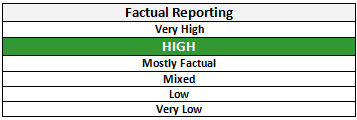In the latest episode of Japanology Plus, NHK WORLD-JAPAN explores the role of goldfish in Japanese culture, from their history as luxury items for aristocrats to their presence in modern Japanese life. The program delves into the intricacies of goldfish varieties and breeding, highlighting the painstaking efforts of breeders to produce aesthetically pleasing and genetically stable breeds. The episode also examines the cultural significance of goldfish, their use in traditional art and design, and the joy they bring to people of all ages through goldfish scooping games at festivals and their calming presence in homes.
- Goldfish have over 100 varieties worldwide, and 30 to 40 are commonly found in Japan.
- The Edogawa area in Tokyo is famous for farming goldfish.
- Goldfish have been part of Japanese culture for centuries, used in traditional paintings and kimono designs.
- Breeders invest significant time and effort into raising goldfish for beauty contests, particularly the Rancho breed, known as the “king of goldfish.”
- Goldfish breeding involves a rigorous selection process, with breeders aiming to perfect the fish’s color and shape.
- Goldfish were originally luxury possessions for the wealthy and have become symbols of peace and a source of local pride.
- Goldfish designs adorn everyday objects and are believed to be auspicious and ward off misfortune.
- Goldfish scooping is a popular activity at summer festivals, with the activity believed to have a cooling effect during the summer months.
- Artist Riusuke Fukahori is known for his three-dimensional goldfish paintings using layers of acrylic resin.
- The episode features an interview with a goldfish expert, Kaada Yos, who shares insights into the complexity and beauty of goldfish breeding.
- Edogawa’s history as a goldfish farming hub is discussed, with the industry’s transition from Tokyo to Ibaraki Prefecture highlighted.
- Goldfish are seen as a reflection of their owner’s care and as symbols of a peaceful society.
NHK WORLD-JAPAN is “the international service of Japan’s public media organization NHK.” NHK World-Japan is operated by Nippon Hoso Kyokai (NHK). The goal of NHK World-Japan is stated as “to promote a deeper international understanding of Japan, introducing the latest events in Japan through news and other programs.”
“Overall, we rate NHK World-Japan Left-Center biased based on story selection that slightly favors the left. We also rate them High for factual reporting due to a clean fact check record.”
https://mediabiasfactcheck.com/nhk-world/


Official website: https://www3.nhk.or.jp/nhkworld/
Original video here.
This summary has been generated by AI.
